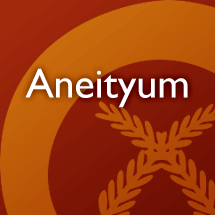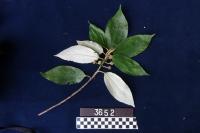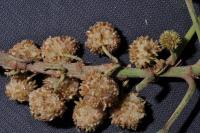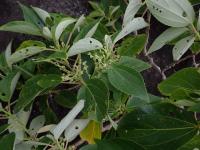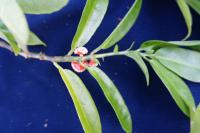Your search for * in family Urticaceae has returned 11 entries
ingejei wou
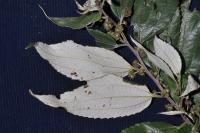
n. tree, 4 m tall (collection: Gregory M. Plunkett #3647)
Example: 1. The straight poles of this plant are sharpened and used to plant kava, and only for kava. Not used for planting other crops. 2. Special for catching eels in fresh water, poke stick with leaves into hole where eel lives and they don’t like it so they come out and you catch them, by cutting with knife.
bookmarknelm̃ae
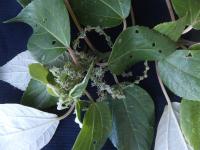
n. small tree. Found in the village, but not cultivated. (collection: Ashley A McGuigan #17)
Example: 1. Ancestors used this plant to make fish line – cut young branches, remove outer bark and tie together, put in salt water or fresh water for a week, it is now strong, dry in sun, take fibers and twist them together to make a very long fishing line. 2. Leaves are used to feed pigs. 3. Take inner bark, scrape it and put on boils. Attach with any leaf and it takes out the boil. 4. Trunk for temporary bush house.
bookmarknelm̃ai
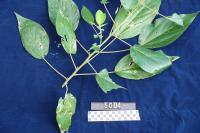
n. tree to 4 m tall, dbh 8 cm (collection: Michael J. Balick #5004)
Example: This plant is used to make fishing line, perhaps moreso in the past than today. Collect young shoots form the sides of the tree, peel off the bark, soak the stem in salt water or fresh water for 1-2 weeks to ret the stems then separate the fibers, dry in the sun and use to make string for fishing. The leaves are used for feeding pigs.
bookmarknelm̃ai
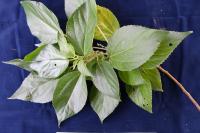
n. tree to 8 m, dbh 10 cm (collection: Michael J. Balick #4863)
Example: Fiber: Collect the stems of this plant, peel off the outer bark, soak (ret) in seawater for 1 week, then put stone on top of it-the fibers are loosened by the retting, peel them off and hang in the sun to dry and bleach. Weave small baskets, grass skirts and other things from this fiber. When sticks are placed in areas of the sea, shells are attracted to these sticks and people can collect the shells used for adornment--the animals in the shells like to eat the material on the sticks. Dried fruits of this plant are eaten by birds.
bookmarknelm̃ai apeñ
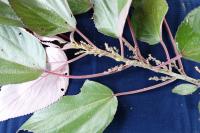
n. tree 6 m tall, dbh 15 cm (collection: Michael J. Balick #4864)
Example: Fiber: Collect the stems of this plant, peel off the outer bark, soak (ret) in seawater for 1 week, then put stone on top of it-the fibers are loosened by the retting, peel them off and hang in the sun to dry and bleach. Weave small baskets, grass skirts and other things from this fiber. When sticks are placed in areas of the sea, shells are attracted to these sticks and people can collect the shells used for adornment--the animals in the shells like to eat the material on the sticks. Dried fruits of this plant are eaten by birds.
bookmarknepñatimi
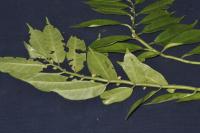
n. epiphyte on syzygium tree, growing in secondary forest along trail above river. old fruits. (collection: Gregory M. Plunkett #3660)
Example: Put several leaves of this species together to wrap food, especially the fresh water eel, and to carry plants of taro, kava, holding the leaves over one’s shoulder to carry these crops.
bookmarknumurumu
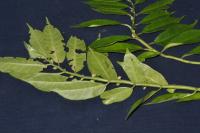
n. epiphyte on Syzygium tree, growing in secondary forest along trail above river. old fruits. (collection: Gregory M. Plunkett #3660)
Example: Put several leaves of this species together to wrap food, especially the fresh water eel, and to carry plants of taro, kava, holding the leaves over one’s shoulder to carry these crops. Used as a baby’s remedy for when the baby is crying too much because the parents are having to much sex. The baby will also be slow to grow and be thin. To remedy this, must wash the baby with the following mixture: nekei atimi (bark), nohos atimi (green skin of the stem), nepnatimi ataman (part not specified). Scrap about 1 inch cubed of the nekei atimi into your hand along with 1in x 4in of the first layer of the green skin of the banana stem (nohos atimi), and the top 8 leaves from about two separate branches of the nepnatimi ataman. Bind all ingredients together and pound them and put everything in the baby’s water for bathing. Wash the baby in water made with this mixture. Do not wipe the baby dry but let it air dry. The next day when you wash the baby with soap, you must re-wash them with the mixture again. Do this for 5 days with the same water mixture. It may small bad but that is okay. Finally on day 5, take the juice from the outter layer of skin on the stem of the banana, nohos atimi, and give a full spoonful of the juice to the baby to drink. Other plants can be added to the bathing water but these are the three primary ingredients.
bookmark